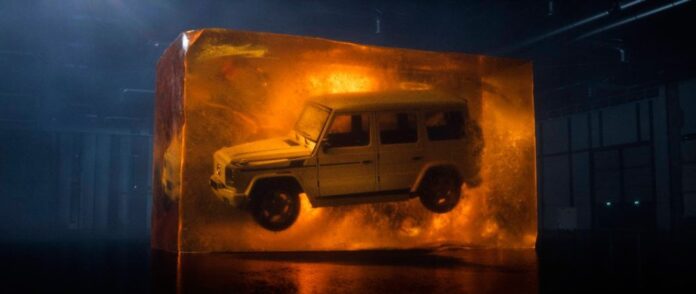Built by craftsmen and technicians with extraordinary sensitivity for contour, color, intricate details, and eye-grabbing verve, the world’s premier automobiles are aesthetic masterworks in their own right. So, it’s no wonder that so many top art collectors, from Adam Lindemann to Artnet News’s own columnist Kenny Schachter, collect cars as well. The esteem, of course, goes both ways. Automakers—most famously BMW, with their storied Art Car series—have made plain their love for fine artists, often pursuing memorable collaborations with them.
Fresh from the New York International Auto Show here is a list of some of the most creative, compelling experiments blending cars with artistic innovation.
A case study for marrying the fields of art and technology, is the stalwart of American automobiles, Cadillac. In 2015, the company moved to Manhattan’s SoHo neighborhood—evolving beyond its gritty, Motor City history. In 2016 it unveiled Cadillac House, a creative incubator space that has some impressive art cred attached. Along with the luxury/art/fashion publication Visionaire, Cadillac House hosts art shows and events.
“Unstoppable Spirit” was launched in 2014 as a campaign at London’s Frieze Week with the debut of the new Land Rover Discovery Sport—accompanied by two sculptures by the Italian artist Nino Mustica. Jaguar Land Rover chief creative officer Gerry McGovern worked closely with Mustica to realize the 3-D-printed works as abstracted “shapes of color” based on automotive design principles. In 2016, the company sponsored the Born Design Awards with a unique work by renowned artist Richard Orlinski, who created one of his geometric-animal sculptures enclosed within the wire frame. Jaguar Land Rover enlisted artist Tupac Martir, whose résumé includes works for Coachella, the New York Festival of Light, and the Hay Festival of Literature and the Arts.
Lexus partnered with artist Michael Murphy for the March 2018 “Love Letters” campaign, a visual interpretation of the Lexus Convenant, the company’s longstanding guiding principles. Murphy gathered 2,000 original thank-you letters sent to Lexus and suspended them from the ceiling. Seen from different vantage points, the origami pieces take the shape of either the new Lexus Sedan or the iconic Lexus logo, epitomizing what the artist calls “perceptual art.” The marriage of form and function is at the heart of the Lexus ethos, and the precision of Murphy’s sculpted forms—the result of hundreds of hours of work—evokes the company’s dedication to craftsmanship.

Every year since 2011, Volvo has hosted its annual Art Sessions in Switzerland, inviting creatives from all over the world to take part in a celebration of innovative thinking across the fields of technology, dance, sound, and visual art. For the second year, the artists behind Flora & Fauna Visions used contemporary dance to illustrate humans’ relationship to an increasingly technological world. Another company working with artists to provide a new perspective on their historic legacy is the standard-setting luxury behemoth Mercedes-Benz. In the 2018 North American International Auto Show in Detroit the brand unveiled a work that could have come straight from the fossil rooms of the Natural History Museum: suspended within 44.4 tons of synthetic amber, the 1979 G-Class is the first iteration of an iconic off-road vehicle that has become a cult. The work is fittingly titled “Stronger Than Time.”
ANALYSIS
This article reflects on the growing relationship between the automobile industry and the art world, and shares just some the examples currently being seen today. I found the article to be validating that the arts and the artists do have a role to play in the world of automobile design, and that most of all, they are being welcomed with enthusiasm. The creations, while often abstract and bizarre in the sense of it raises some questions of how exactly it relates to cars, force the designer to consider a different perspective. I think the article does a good job of pointing out the story being told within each of these pieces, and not only the stories but the way that it triggers deeper thought about design and the relationships between humans and technology. For me, I think the article encourages more abstract thought, and to consider design with a more freedom and beauty than its typical technical roots. Art is subjective, and as a designer to play at being an artist every once and a while might lead down a path of new discovery. Or at least a new thought process.




